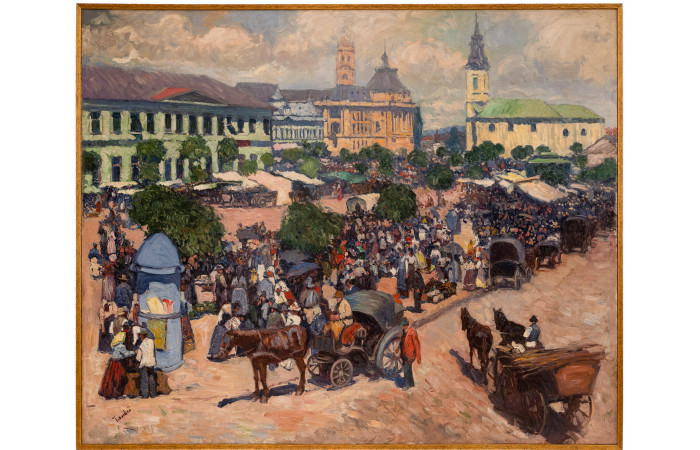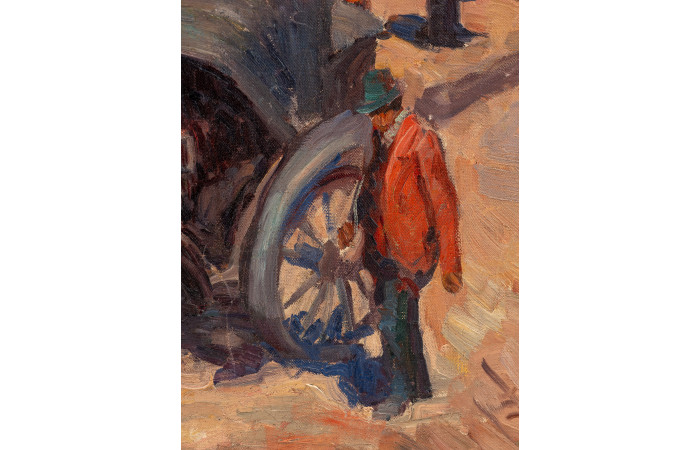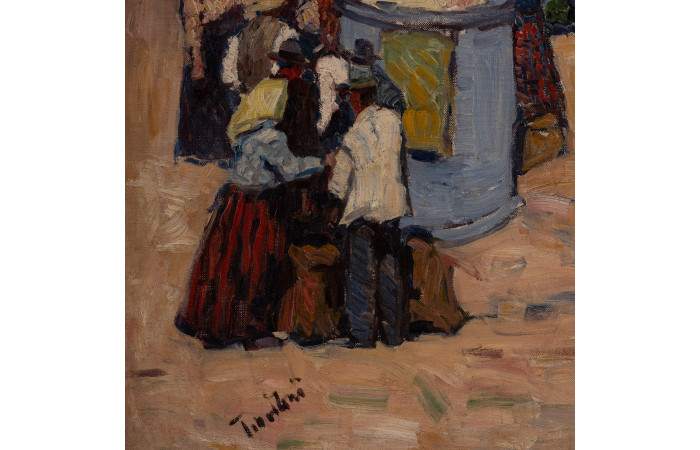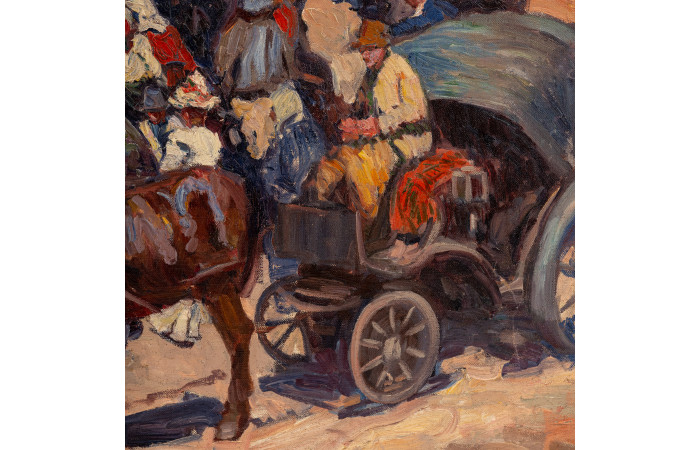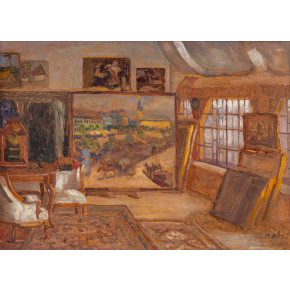The Small Square in Oradea (Piața Mică din Oradea)
Description
Provenance
Private Collection, Romania
Location
Bucharest, Romania
Description
Tibor Ernő (1885–1945) was a Hungarian painter whose life and work were closely tied to the city of Oradea, a place that underwent a significant artistic and urban transformation in the late 19th and early 20th centuries. Educated first in Budapest and later at the Académie Julian in Paris, he was stylistically shaped by Impressionism, yet maintained a rigorous compositional logic and strong graphic structure throughout his work.
Ernő’s paintings document with precision and sensitivity the architectural and social vitality of Oradea, capturing its squares, parks, and bridges in vibrant scenes animated by human presence. His palette, often warm and luminous, was applied in pointillist touches and plein-air compositions that aligned him with the Impressionist movement, even as he developed a highly personal interpretation of light and colour. Exhibiting from an early age, including at the Salon Officiel in Paris and the National Salon in Budapest, Ernő earned critical acclaim for his rejection of academic conventions and for his fresh treatment of landscape and urban life.
The early decades of the 20th century saw Ernő traveling and exhibiting widely across Europe, from France and Italy to Germany, Sweden, and Denmark. His paintings evolved during this period to include scenes of rural labour and industrial activity, reflecting a growing social consciousness while preserving a refined pictorial structure. Even as his art bore witness to the shifting modernities of interwar Central Europe, Ernő remained deeply attached to Oradea, portraying it with both documentary precision and emotional resonance.
He was also active as a teacher, founding a private art school in 1908 and joining the literary society A Holnap, where he intersected with modernist currents in both visual and literary arts. His legacy was later recognized through several retrospective exhibitions, including those organized by the Muzeul Țării Crișurilor, which also honoured him as one of the many Jewish artists persecuted during the Holocaust.
Tibor Ernő was deported in 1944 to Auschwitz and later to the Kaufering subcamp of Dachau, where he died in the spring of 1945. His works remain a crucial visual record of a multicultural and modernizing Oradea, as well as a testament to the artistic and civic contributions of Jewish artists in Central Europe. Paintings by Tibor Ernő are preserved today in public and private collections, including those of the Muzeul Țării Crișurilor in Oradea.
Exhibitions
Literature
Reproduced in Tibor Ernő, Maria Zintz, Institutului Cultural Român Publishing House, 2016, p. 132
The works of art which are subject to artist resale royalty rights ('droit de suite') are marked with an * in the description of the work of art. The amount of the royalties is calculated using a sliding scale of percentages of the Hammer Price.
Lots featured on Ans Azura’s platform may be subject to export regulations in the country where they are located and import regulations in the country where they will be shipped to. The location of each Lot is marked in its description.You are responsible for ensuring that you understand and comply with all relevant laws or regulations applicable in relation to the export or import of any Lot that you intend to purchase.
By registering to bid in auctions and by bidding on the Ans Azura platform you agree to the Bidder’s and Buyer’s Terms and Conditions which you may consult here. Please read these Terms and Conditions carefully. By bidding you accept personal liability to pay the Purchase Price consisting of the Hammer Price and the Buyer’s Premium plus the applicable Buyer's Expenses. Please note that the Total Cost Calculator will display the amount including the estimated Buyer’s Premium, exclusive of related artist resale royalties and any shipping expenses and all duties, taxes, VAT, and/or custom processing fees payable by the Buyer.
